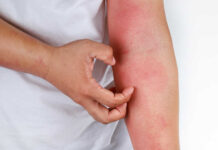
Hair loss is a common issue that people of all ages face. While it may feel embarrassing and cause a great deal of anxiety, it is essential to remember that hair loss is usually not a sign of a serious health condition.
However, if you are experiencing excessive hair loss or if your hair loss is accompanied by other concerning symptoms, see your doctor to help determine if there are any underlying medical conditions.
The Hair Growth Cycle
Hair growth occurs in a cyclical pattern with four distinct phases:
- Anagen phase: This is the active growth phase. Hairs in this phase typically grow half an inch per month. It typically lasts 2-7 years.
- Catagen phase: This is the transitional phase. It lasts around two weeks and signals the end of the active growth phase.
- Telogen phase: This is the resting phase. Hairs in this phase are not actively growing, but they may stay attached to the follicle for one or two months.
- Exogen phase: This is the shedding phase. The hair is released from the follicle and falls out.
Each follicle (the structure in the skin that houses the hair shaft) has its growth cycle. As one thread of hair completes its growth cycle and falls out, a new hair emerges from that same follicle to take its place.
Generally, about 85-90% of the hair on your head is in the anagen (growth) phase, while 10-15% is in the Telogen (resting) phase. For most people, about 50-100 hairs will naturally fall out each day.
Why Hair Loss Happens
Hair loss typically occurs when the hair follicle structures become damaged or disrupted, causing hairs to fall out too soon or preventing new hairs from growing in their place.
There are many possible causes of hair loss, but some of the most common include the following:
- Hormonal changes: Hormones play a very important role in regulating the hair growth cycle, and imbalances can cause hair loss.
- Nutritional deficiencies: Hair follicles need nutrients like protein, iron, and vitamin B-12 to stay healthy. A lack of these nutrients can lead to hair loss.
- Autoimmune disorders: Alopecia areata occurs when your immune system attacks your own hair follicles, causing patchy hair loss.
- Medications: Certain medications can cause hair loss as a side effect. Common culprits include blood thinners, antidepressants, beta-blockers, and chemotherapy.
- Stress: Physical or emotional stress can cause telogen effluvium—a condition in which hairs accelerate to the end of their cycle too soon before a new hair is ready to grow from the follicle.
- Styling damage: Over-styling, especially with harsh chemicals or heat, can damage the hair shaft and lead to hair loss.
Managing and Treating Hair Loss
There are many possible treatments for hair loss, depending on the underlying cause.
For example, hormonal imbalances can be treated with hormone therapy. Nutritional deficiencies can be addressed by changing your diet or taking supplements. Autoimmune disorders may require immunosuppressive medications.
In some cases, hair loss may improve on its own with time. For example, telogen effluvium often resolves after the stressful event has passed.
It can also help to minimize your use of harsh styling products and heating tools and to be gentle with your hair when shampooing and brushing. Your hair is especially vulnerable to damage when it’s wet.
There are currently 2 FDA-approved medications for treating androgenetic alopecia: finasteride (Propecia) and minoxidil (Rogaine).
Oral finasteride is not recommended for women who are or may become pregnant, as it can cause birth defects.
Minoxidil is a topical medication that both men and women can use. It increases blood flow to the hair follicles, which may promote hair growth.
Talk to your doctor about your hair loss to determine the best course of treatment.






















